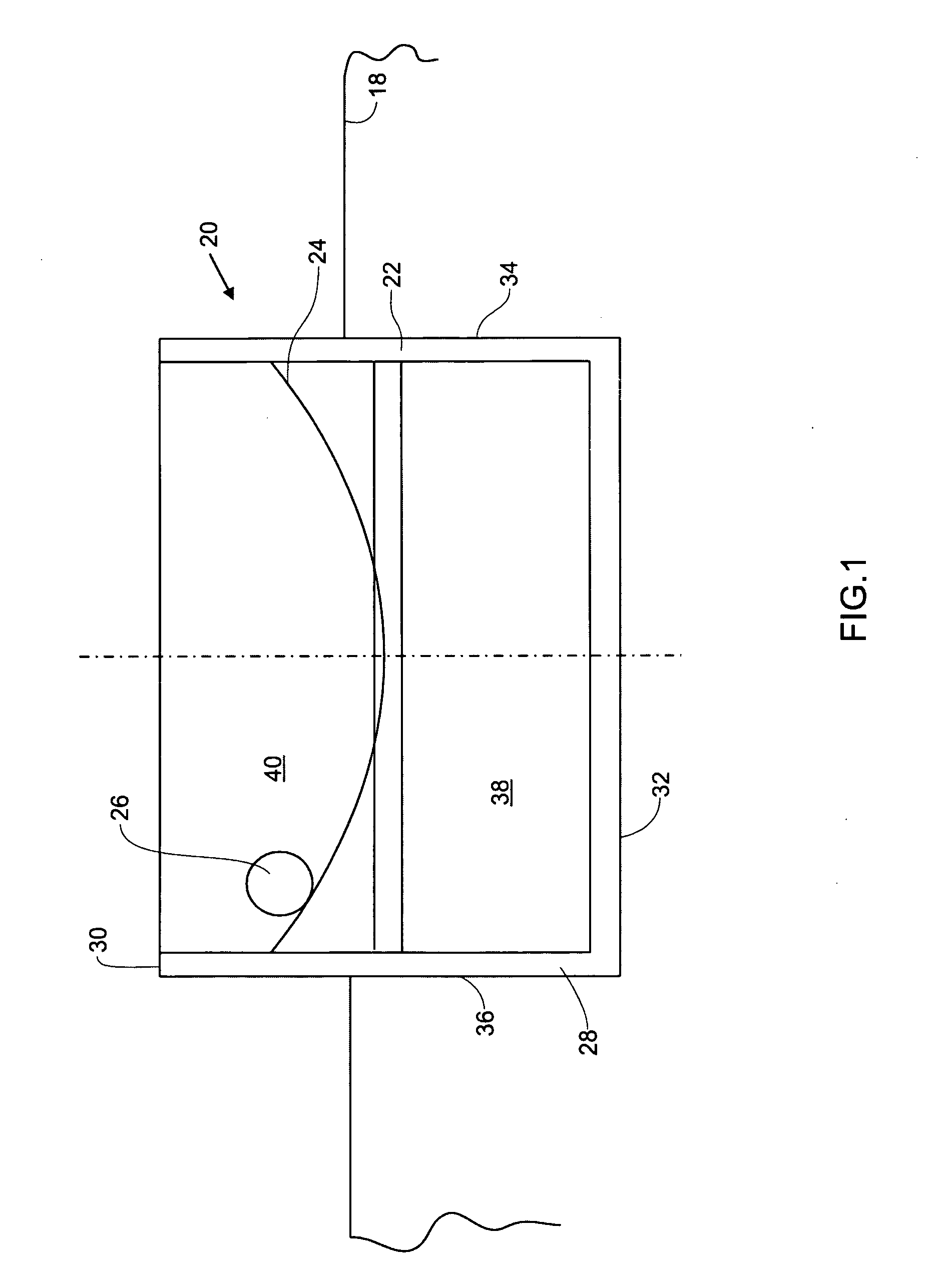System for producing electricity through the action of waves on floating platforms
- Summary
- Abstract
- Description
- Claims
- Application Information
AI Technical Summary
Benefits of technology
Problems solved by technology
Method used
Image
Examples
Embodiment Construction
[0030]Two-thirds of the earth's surface is covered with water. Three-fourths of the earth's population lives within close proximity to an ocean or other large body of water. All of these people need electricity.
[0031]The wind blowing on the surface of an ocean or other large body of water (hereinafter, collectively, the “Ocean”) efficiently converts wind energy into wave energy. The present invention is a system for converting the energy of waves on the Ocean into low-cost, efficient, reliable, clean electricity.
[0032]Referring to FIG. 1, a system 20 having a floating platform 22 on a body of water 18 without waves, a track 24, and a mass 26, a rolling energy generating mass, is shown. The floating platform 22 has a hull 28 including a top surface 30, a bottom surface 32, a leading edge 34, and a trailing edge 36. The hull has a buoyancy compartment 38 and an energy generating portion 40. The track 24 and the mass 26 are located in the energy generating portion 40 as explained in gr...
PUM
 Login to View More
Login to View More Abstract
Description
Claims
Application Information
 Login to View More
Login to View More - R&D Engineer
- R&D Manager
- IP Professional
- Industry Leading Data Capabilities
- Powerful AI technology
- Patent DNA Extraction
Browse by: Latest US Patents, China's latest patents, Technical Efficacy Thesaurus, Application Domain, Technology Topic, Popular Technical Reports.
© 2024 PatSnap. All rights reserved.Legal|Privacy policy|Modern Slavery Act Transparency Statement|Sitemap|About US| Contact US: help@patsnap.com










